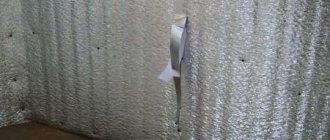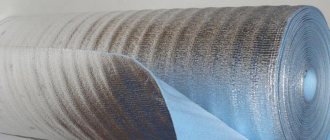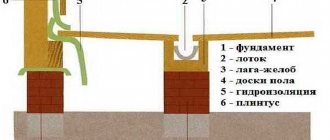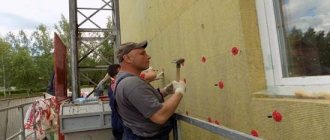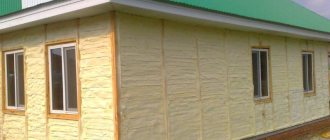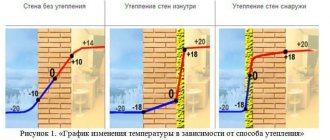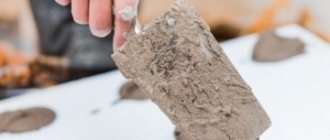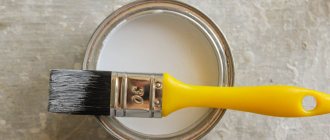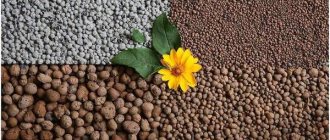Polyethylene foam is a group of elastic elastic materials with a closed porous structure, belonging to the class of gas-filled porous plastics.
Unlike most other polymers that have narrow-profile applications, polyethylene foam is universal.
The combination of heat, sound and waterproofing properties combined with high chemical resistance explain its use in the industrial and domestic sectors.
The raw material for polyethylene foam is granulated polyethylene LDPE and HDPE, including recycled polyethylene obtained by processing film and other waste.
Production stages
The polyethylene foam production line consists of:
- extruder;
- compressor for gas supply;
- cooling lines;
- packaging.
Depending on the type of final product, the equipment may be called bag-making, pipe-stitching, etc.
Additionally, flying shears and punching presses of various designs and molding machines are used.
A granule of LDPE, HDPE or compositions based on them is loaded into the receiving hopper.
Trimmings, the main type of polyethylene foam production waste, are returned to the production cycle after minimal processing.
Many enterprises mix primary raw materials with regranulate .
The main requirements for secondary raw materials for the production of foamed polyethylene are the absence of mechanical impurities, the same type in color and average molecular weight as primary PE.
If the requirements are met, the quality, operational and mechanical properties of the finished product do not suffer.
Available in standard sizes
| DESIGNATION | DESCRIPTION | STANDARD SIZES |
| ISOLON NPE | Foamed polyethylene in rolls | 0.5-1 mm – rolls 1.05 x 200 m 2-10mm – rolls 1.05 x 50 m |
| IZOLON NPE laminated | ISOLON NPE laminated with lavsan film with a durable metallized coating (on one or both sides) | 2,3,4,5,8,10 – rolls 1.0 x 25 m rolls 1.2 x 25 m |
| ISOLON NPE foil | ISOLON NPE laminated with polished aluminum foil (on one or both sides) | 2,3,4,5,8,10 – rolls 1.0 x 25 m rolls 1.2 x 25 m |
| ISOLON NPE self-adhesive | ISOLON NPE with an applied adhesive layer covered with anti-adhesive film or paper | 2,3,4,5,8,10 – rolls 1.0 x 25 m rolls 1.2 x 25 m |
| ISOLON NPE foil self-adhesive | ISOLON NPE laminated with polished aluminum foil on one side and an adhesive layer on the other | 2,3,4,5,8,10 – rolls 1.0 x 25 m rolls 1.2 x 25 m |
| ISOLON NPE-L | ISOLON NPE duplicated by thermal melting | 20,25,30,35,40,45,50 and more mm. – sheets 1.0 x 2.0 m. |
Physicochemical characteristics
Here are the main properties of the material :
- The lower limit of operating temperatures is -80 °C. When going beyond it, the material loses its elasticity and becomes brittle.
- Melting point is about 110 °C. Some manufacturers offer compositions with an upper limit of 140 °C.
- Water absorption (with direct contact) does not exceed 1.2%.
- The tensile strength is 0.015 - 0.5 MPa.
- The material is resistant to most aggressive compounds, including petroleum products, and biologically active environments.
- Service life reaches 100 years.
Data on thermal conductivity in comparison with other types of gas-filled polymers are given in the table:
| Material | Density, kg/m3 | Thermal conductivity, W/m ° K |
| Polyethylene foam | 20 – 400 | 0, 029 – 0,05 |
| Polypropylene foam | 20 – 200 | 0, 034 |
| Polyurethane foam | 60 – 600 | 0,02 – 0,04 |
| Foam rubber | 12 – 60 | 0,03 – 0,06 |
| Expanded polystyrene | 15 – 150 | 0,027 – 0,042 |
| Polyvinyl chloride foam | 15 – 700 | 0,035 – 0,045 |
Data taken from manufacturers' advertising offers.
Main advantages of ISOLON NPE
Excellent thermal insulation properties
the material has the lowest thermal conductivity coefficient among insulating materials - 0.040 W/mK with a density of 26 kg/m3. To understand how little heat IZOLON NPE conducts, you can look at the given comparative table of thermal conductivity of various materials
| COMPARATIVE INDICATORS OF THERMAL CONDUCTIVITY OF VARIOUS MATERIALS | |
| ISOLON NPE | 0.040 W/(m K) |
| Steel | 46 W/(m K) |
| Concrete | 0.84 - 1.3 W/(m K) |
| Brick | 0.63 - 0.84 W/(m K) |
| Tree | 0.13 - 0.42 W/(m K) |
| Air at 20ºС | 0.024 W/(mK) |
A 1 cm layer of ISOLON NPE insulation replaces 1.4 cm of polystyrene foam, 16 cm of brickwork, 5 cm of wood!
At the same time, reliable conservation of heat energy, as well as cold (the cost of which is much higher), allows you to feel the economic effect of using Izolon at the very beginning of operation.
Effective protection against moisture and steam
Thanks to its closed-cell structure, isolon practically does not absorb water and, in addition, is an excellent protection against moisture and water vapor throughout the entire volume of the material. Resistance to water vapor diffusion is not limited even for an extremely thin outer layer, and does not exceed 0.2%.
Excellent sound insulation
Sound insulation from knocking and some other noises, combined with low dynamic stiffness and small thickness, gives IZOLON NPE unique sound insulation properties
Environmental Safety
The material is non-toxic and odorless. In the production of ISOLON NPE, freon, a dangerous gas that destroys the ozone layer in the atmosphere, is not used; the material itself is produced on the basis of high-quality food-grade polymer raw materials. Contact with food and human skin is allowed.
Chemical stability
Izolon has good oil, petroleum and petrol resistance, and is also compatible with almost any building materials (for example, concrete, cement, wood, lime, gypsum, etc.)
Durability and performance retention
The polymers from which IZOLON NPE is produced make the product resistant to decay in an environment with any microbiological composition, thus IZOLON NPE does not lose its properties for more than 90 years of operation!
Manufacturability
ISOLON NPE is easy to install. This material, pleasant to the touch, lightweight and elastic, ensures high-tech installation in any conditions. Izolon is easily machined and does not require the use of special devices. Installation requires a knife, stapler, aluminum tape and tape measure.
Classification
Polyethylene-based foams are classified according to the following criteria :
- type of feedstock;
- foaming method;
- stitching method.
For the manufacture of PPE, PVD and HDPE granules are used, as well as various compositions based on them. The molecular structure of any type of polyethylene makes it possible to obtain materials with predictable properties.
In the production of polyethylene foam,
two methods are used to create a gaseous phase :
- Physical. This is the direct injection of gas (butane or other light saturated hydrocarbons) into the molten feedstock - the cheapest foaming method. However, it requires the use of specialized equipment and compliance with increased fire safety precautions.
- Chemical. Reagents are introduced into the feedstock, which decompose and release gases. Chemical foaming can be performed on standard foundry and extrusion equipment. The composition of the additives is determined by the requirements for density and cell size.
Modern production technologies make it possible to obtain various molecular structures of gas-filled polyethylene:
- Unstitched (NPE). It is obtained using physical foaming technology. At the same time, polyethylene retains the original structure specified during synthesis. NPE is distinguished by relatively low strength characteristics and its use is justified under conditions of minor mechanical loads.
- Chemically cross-linked (CS-PPE). The technology includes the following stages: mixing raw materials with foaming and cross-linking reagents, forming an initial matrix blank, stepwise heating in a furnace. Heat treatment leads to the formation of cross-links between the polymer threads (crosslinking occurs), and then gas formation occurs. Products made from CS-PPE have a fine-porous structure, a matte surface and higher mechanical properties compared to products made from NPE: strength, tear resistance, elasticity, i.e. the ability to return to its original thickness after compression.
- Physically cross-linked (FS-PPE). The material does not contain crosslinking additives, and instead of the first stage of heat treatment, the matrix blank is treated with an electron flow, which initiates the crosslinking process. The ability to control the number of cross-links allows you to vary the characteristics of the material and cell sizes.
Unlike most structural materials, polyethylene foam is marked not by strength indicators, but by average density, i.e. the ratio of weight per unit volume (kg/m3): 15, 25, 35, 50, 75, 100, ... 500, as for example shown in the photo above.
The method for determining average density is described in GOST 409 - 2017.
Thanks to the work of marketers, domestic consumers are more familiar with the brands of polyethylene foams used, in particular, for pipe thermal insulation:
- Izolon;
- Teploflex;
- Penolon;
- Tatfoum;
- Hitfom;
- Stage, etc.
Product production is most often regulated by internal enterprise standards and technical specifications.
However, in Russia, GOST R 56729-2015, corresponding to EN 14313:2009, has been developed for the production of thermal insulation materials.
Types of foamed polyethylene
Currently, a large amount of polyethylene foam is produced, which is divided into three main types:
- Non-crosslinked polyethylene foam (NPE), made by saturating a polymer mass melted in an extruder with propane and butane. During the pouring process, under the influence of atmospheric pressure, gas bubbles solidify and form structural cells. The material has low density and loose large pores. Easily deformed, after the cessation of mechanical stress it almost does not restore its original shape. Despite its high thermal insulation qualities, the material is mainly used to create packaging.
Figure 3. Non-crosslinked PPE.
- Chemically cross-linked polyethylene foam (CPPE) is created similarly to non-cross-linked polyethylene foam. Additionally, during its production, hydrogen peroxide is introduced into the molten mixture along with gases. Under the influence of a chemical reaction, small cells with a strong and dense structure are formed. The resulting material is able to restore its original shape after the cessation of mechanical action.
Figure 4. Cross-linked PPE.
- Cross-linked polyethylene foam foamed by radiation or physical method (FPPE) acquires softness and elasticity, consists of small cells and has a smooth surface. Capable of withstanding high mechanical loads and pressure up to 0.035 MPa. It is made by exposing the molten polyethylene mass to a beam of electrons produced by a powerful emitter. The cross-links that form in this way strengthen the material at the molecular level. Due to its high elasticity and the ability to restore its shape immediately after removing loads, it is ideal as a floor substrate, as well as when installing floors using floating technology.
FPPE is the most expensive and high-quality of foamed polyethylenes.
Important! When choosing products made from polyethylene foam, it is necessary to take into account the characteristics of the material, choosing it in accordance with the area of application and operating conditions.
Application of polyethylene foam
Below we will describe the main areas of application.
Soundproofing
Like all cellular materials, polyethylene foam absorbs airborne noise well . A sound wave passing through a PPE layer loses a significant part of its kinetic energy due to its conversion into heat.
NPE is a good barrier to impact noise and vibration. Of all acoustic materials, it has the highest characteristics for absorbing low-frequency vibrations.
Cross-linked polyethylene foam is also used for sound insulation in residential and industrial construction, automotive and mechanical engineering.
PPE tape laid on the ceiling and walls when installing a floating screed is considered to be an effective blocker for the occurrence of structural noise.
Thermal insulation
Low thermal conductivity and vapor permeability have made foamed polyethylene one of the most popular materials in construction.
Sheet and roll polyethylene foam is used mainly indoors as part of a heat-insulating pie of facade walls, roofing, ventilation and air conditioning systems for insulating a house.
PPE for thermal insulation is covered with foil, which is an additional barrier to heat and a mirror that reflects infrared radiation .
One of the areas of application of foamed polyethylene is insulation for pipes of heating mains, cold and hot water.
Sealing and packaging
In addition to pipe thermal insulation and insulation, PPE is used to produce packaging materials for transporting fragile objects and painted structures.
Vacuum forming and die-cutting machines are used to create packaging for mass-produced products that also serves as a sealant, for example, for mobile phones, electronic and electrical appliances.
Foaming methods
In the production of cross-linked foamed polyethylene, the process of foaming the raw material itself occurs in three different ways.
- Horizontal foaming - used in the production of cross-linked polymer foams. Chemically cross-linked polymer is cross-linked during the foaming process, while physically cross-linked polyethylene foam is supplied already cross-linked.
- In vertical foaming, only pre-physically cross-linked polyethylene foam is used. At the beginning of the production process, the heated raw materials are foamed in a vertical position, then cooled and rolled into rolls.
- In block production, the raw materials that have passed through the extruder are cut into sheets and placed in forming blocks. After the chemical crosslinking process, the blank from the block enters the press, where final foaming occurs at high temperature and under high pressure.
Recycling
To dispose of polyethylene foam waste, the same technologies are used as for non-foamed polyethylene foam - thermomechanical and thermochemical recycling , or pyrolysis.
Used PPE packaging is processed into a secondary granule, and cross-linked PPE crumbs serve as a filler for composite materials from which paving slabs and other artificial coatings are made.
The main feature of gas-filled polymers – low density – makes adjustments to the technology. During processing, PPE waste is compressed in specialized machines - thermocompactors.
On the equipment market you can find devices with a compression ratio of up to 90:1. PPE briquetted in compactors can be loaded into an extruder or thermal oven and used as a raw material for the production of polyethylene wax.
